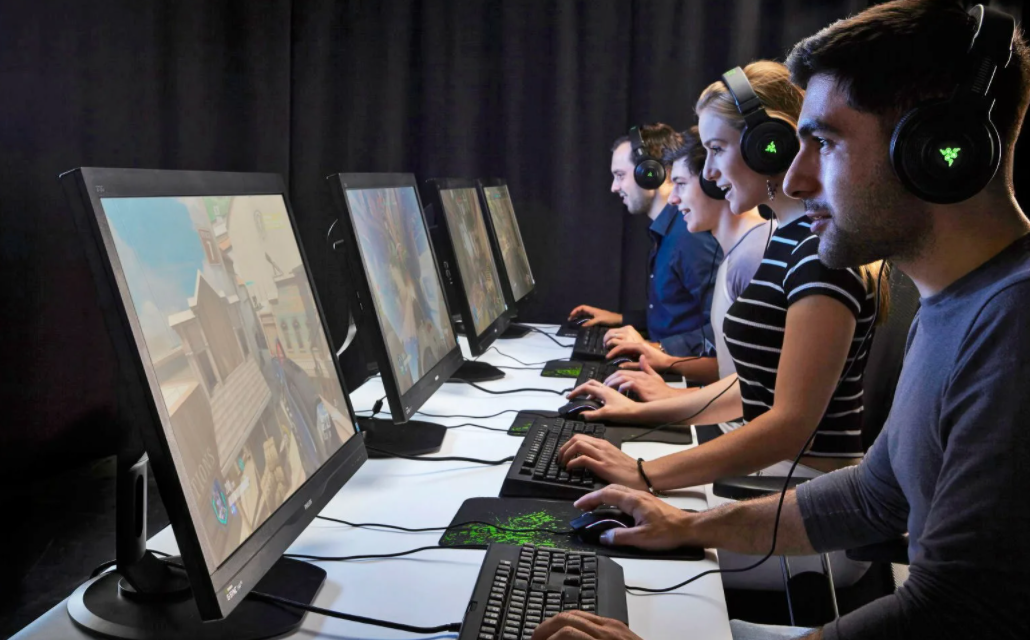The gaming industry, characterized by rapid innovation and extensive cultural influence, frequently encounters a myriad of myths and stereotypes that skew public perception. As this sector continues to expand, reaching global audiences and integrating into various aspects of daily life, the necessity to confront and debunk these prevailing myths grows ever more crucial.
These misconceptions not only misrepresent the industry’s true nature but also hinder the acceptance of gaming as a legitimate and richly diverse form of entertainment and art. From misguided beliefs about its demographic reach to underestimations of its cultural impact, it is imperative to challenge and rectify these inaccuracies. This process isn’t merely about setting the record straight; it’s about promoting a deeper understanding of the gaming world’s complexity and its potential as a force for creativity and social interaction. By dispelling the top ten myths about the gaming industry, we seek to transform outdated narratives and encourage a more inclusive, informed dialogue about the role of gaming in modern society. To illustrate the variety within the gaming industry, one can look at different segments, such as online casinos which are reviewed on platforms like Stay casino review, showing the diversity and reach of gaming as both entertainment and art.
Myth 1: Video games lead to violence in real life
Although some studies attempt to link video games to violence, most scholars and experts agree that the link is not unequivocal. Rating systems and parental controls play a key role in choosing appropriate games for children and teens, eliminating exposure to objectionable content.
Myth 2: All gamers are teenagers or young adults
In reality, gamers are a diverse group of people of different ages. Statistics show that the average age of a gamer is around 35 years old. Games are designed for different ages and interests, offering a wide range of genres and styles, making them appealing to all ages.
Myth 3: Games lead to anti-social behaviour
Many multiplayer games provide opportunities for social interaction and teamwork. Games can encourage the development of social skills such as communication, co-operation and conflict resolution.
Myth 4: Games develop addiction
It is important to distinguish between a hobby and an addiction. A hobby can be rewarding and healthy, while an addiction causes negative consequences for the individual and those around them. It is important to learn how to control and balance your gaming activity to avoid possible addiction.
Myth 5: Gaming is the cause of poor health
Maintaining a healthy lifestyle and moderation in gaming is paramount to maintaining health and well-being. Physically active and VR games help maintain health by offering fun ways to engage in physical activity.
Myth 6: Mobile gaming cannot compare to PC or console games
The mobile gaming industry is growing rapidly and offers many quality games to suit all tastes.
Games like Monument Valley, Florence and others prove that mobile gaming can be not only entertaining, but also deep and high-quality.
Myth 7: The gaming industry is only entertainment, not art
Games such as Journey, What Remains of Edith Finch and The Last of Us demonstrate artistic expression and emotional depth comparable to film and literature. More and more games are being recognised as an art form, culturally influencing and inspiring artists and musicians.
Myth 8: Games only teach aggression and negative skills
Educational and developmental games such as Brain Age, Kerbal Space Programme and Minecraft offer players the opportunity to develop critical thinking, creativity and problem-solving skills. Games such as Portal and Civilisation require strategic thinking and planning, while adventure and role-playing games such as The Witcher 3 and Life is Strange improve empathy and moral reasoning.
Myth 9: Women don’t play video games or make up a small percentage of players
Studies show that women make up about 45% of all gamers, and their interests in games are diverse, including puzzle, strategy, and role-playing genres. Female developers such as Roberta Williams, Jane McGonigal and Kim Swift have made significant contributions to the gaming industry, creating innovative and successful game projects that have influenced millions of players around the world.
Myth 10: The gaming industry is fading and losing its popularity
Statistics show that the gaming industry continues to grow and is predicted to reach a value of over $200 billion by 2023. This shows that interest in video games is only growing. New technologies such as virtual and augmented reality, cloud gamification and streaming services offer new opportunities for developers and players, fuelling further development of the industry.
Conclusion
Realising the reality of the gaming industry will help to create a more objective and fact-based perception of video games. By dispelling myths, we can discover the many positive aspects of video games, such as learning, skill development, social interaction and just having a good time. Encourage critical thinking and unbiased perception of video games. By breaking stereotypes and myths, we can open new horizons and opportunities for ourselves, our children and future generations of gamers!








![[Rumour] Tales of Xillia Remastered appears in some retailers](https://vgleaks.com/wp-content/uploads/2024/07/Tales_of_Xillia_Test_Screenshots_30-pc-games-150x150.jpg)









